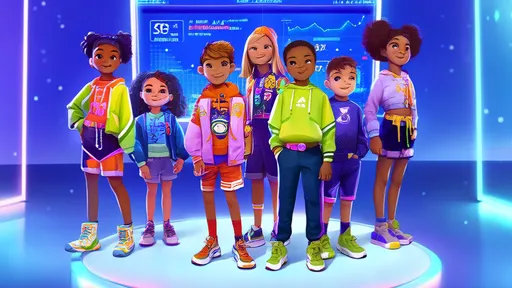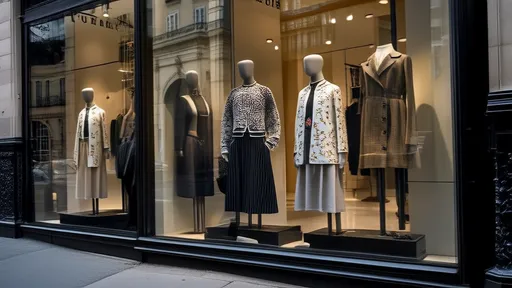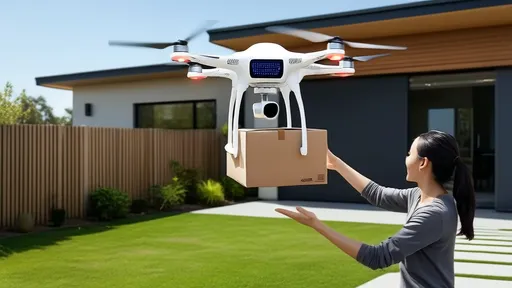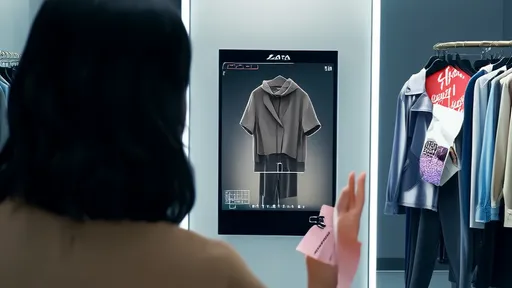The retail landscape has undergone a seismic shift in recent years, with live-stream shopping emerging as one of the most transformative trends. Now, Meta's groundbreaking virtual try-on technology is pushing the boundaries even further, reportedly slashing return rates by a staggering 60%. This innovation marks the dawn of what industry insiders are calling "Live Commerce 3.0" - where augmented reality bridges the gap between digital browsing and physical shopping experiences.
For years, high return rates have been the Achilles' heel of e-commerce, particularly in fashion and beauty sectors where fit and color accuracy are paramount. Traditional product images and even video demonstrations often leave consumers guessing, resulting in a return rate that can reach 40% for certain apparel categories. Meta's solution leverages advanced AR capabilities to let shoppers visualize products on their own bodies in real-time during live streams, creating what experts describe as "the closest digital equivalent to in-store fitting rooms."
The technology works through sophisticated body mapping algorithms that adjust for individual body shapes, skin tones, and even lighting conditions. During live shopping events, hosts can demonstrate the virtual try-on process while viewers simultaneously experiment with different sizes, colors, and styles on their own digital avatars. Early adopters report not just reduced returns, but significant boosts in conversion rates and average order values as shoppers gain confidence in their purchases.
What makes this development particularly noteworthy is its timing. As retailers grapple with the economic impact of excessive returns - estimated to cost the industry hundreds of billions annually - virtual try-on offers a rare win-win solution. Consumers enjoy a more accurate shopping experience while businesses see improved margins through fewer reverse logistics operations. The environmental benefits are equally compelling, with reduced transportation emissions from fewer returned items.
The implementation isn't without its challenges, however. Creating accurate virtual representations of diverse body types and complex fabrics requires massive computational power and continuous refinement. Meta has invested heavily in machine learning models that analyze thousands of real-world try-ons to improve their simulations. The company has also partnered with major brands to build extensive digital inventories of 3D product models that maintain texture and drape authenticity.
Industry analysts observe that this technology is changing consumer behavior in unexpected ways. Shoppers who use virtual try-on features tend to spend more time engaging with products during live streams, creating richer data for retailers about preferences and decision-making patterns. Some forward-thinking brands are already using these insights to optimize product designs and inventory planning.
The social component of live-stream shopping combined with virtual try-on creates a powerful new dynamic. Viewers can see how products look on both the host and themselves, then discuss options with other shoppers in real-time chat. This communal aspect, reminiscent of shopping with friends, appears to drive higher engagement and purchase intent compared to traditional e-commerce or even in-store experiences.
As the technology matures, experts anticipate expansion into new categories beyond apparel and cosmetics. Early experiments with virtual furniture placement in home decor streams and AR eyewear try-ons show promising results. The next frontier may involve multi-sensory experiences, with emerging technologies that simulate fabric textures or product weights through haptic feedback devices.
Retail executives caution that while virtual try-on represents a major advancement, it's not a panacea. The human element provided by skilled live stream hosts remains crucial for building trust and answering nuanced product questions. The most successful implementations blend technological innovation with authentic storytelling and entertainment value.
Looking ahead, Meta's virtual try-on achievement may signal a broader transformation in how consumers discover and evaluate products online. As AR hardware becomes more sophisticated and widespread, these immersive shopping experiences could redefine retail standards much like free returns and fast shipping did in previous e-commerce eras. For now, the dramatic reduction in return rates provides compelling evidence that Live Commerce 3.0 is more than just hype - it's the beginning of a smarter, more sustainable way to shop.

By /Jul 24, 2025

By /Jul 24, 2025

By /Jul 24, 2025

By /Jul 24, 2025

By /Jul 24, 2025

By /Jul 24, 2025

By /Jul 24, 2025

By /Jul 24, 2025

By /Jul 24, 2025

By /Jul 24, 2025

By /Jul 24, 2025

By /Jul 24, 2025

By /Jul 24, 2025

By /Jul 24, 2025

By /Jul 24, 2025

By /Jul 24, 2025

By /Jul 24, 2025

By /Jul 24, 2025